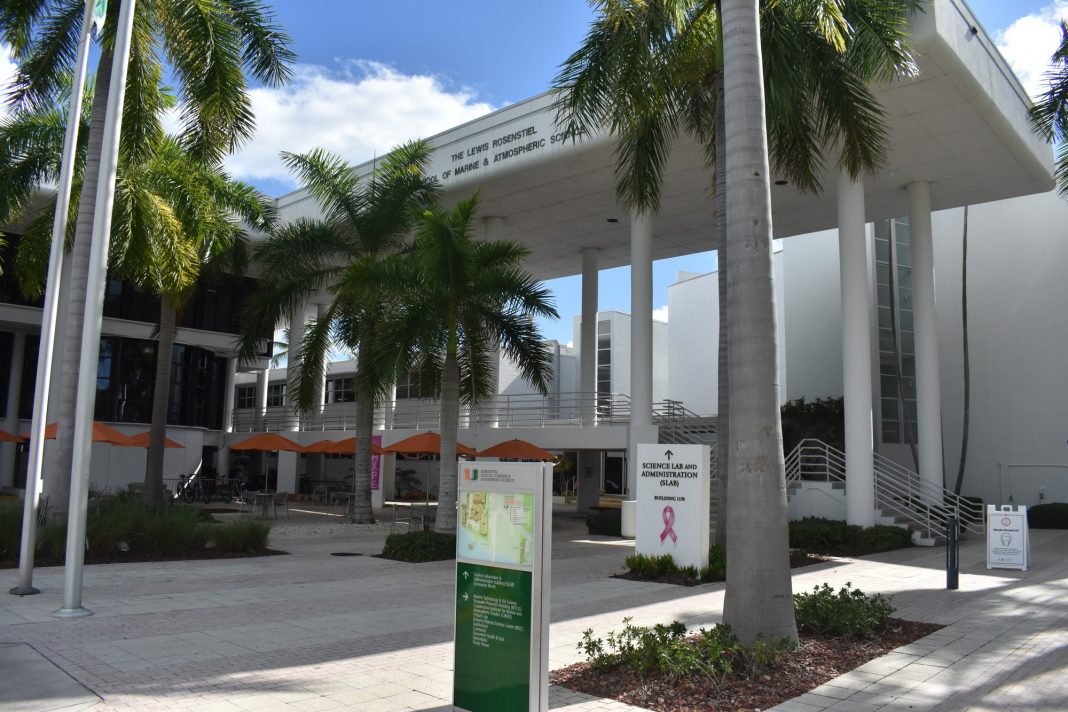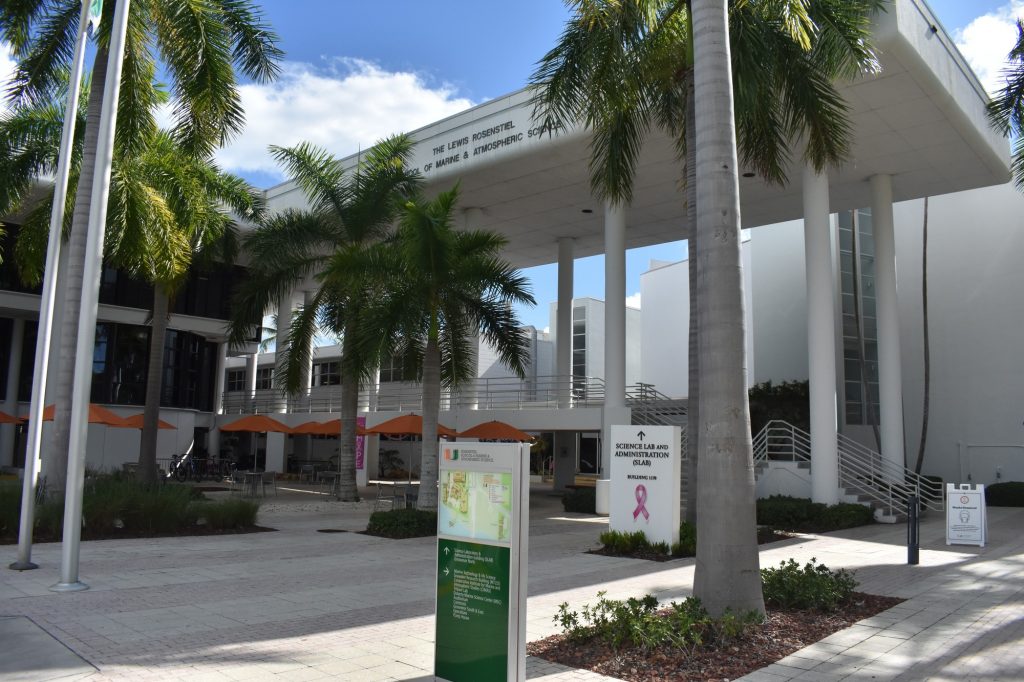
According to the University of Miami’s 2020-2021 factbook, 53% of undergraduate students at UM are Black, Latino, Asian-American, Pacific Islanders or American Indian. At the Rosenstiel School of Marine and Atmospheric Science (RSMAS), only 27% of students identify as any one of these races.
RSMAS sticks out as the least racially diverse school at UM, both at the undergraduate and graduate levels.
While UM has prioritized greater racial diversity in its faculty and student body over the last 15 years, it was ranked 100 in a recent U.S. News study judging universities on “where students are most likely to encounter undergraduates from racial or ethnic groups different from their own.”
“When you see there’s not a lot of people that look like you in those classes, there’s a sense of unease,” said Justin Jenkins, treasurer of Rho Rho Rho, UM’s Marine and Atmospheric Honor Society. “You feel like you don’t fit into that major.”
Despite the school’s relatively low diversity rates, the recruitment and enrollment of underrepresented minority students at RSMAS is well above the national average for degree programs in the natural sciences, according to the latest data from the National Science Foundation.

However, issues with racial diversity plague Science, Technology, Engineering and Mathematics (STEM) areas of study across the country, particularly within the geosciences. Nationally, only 15.7% of undergraduate students in geosciences are members of a racial minority.
Common explanations of this trend are varied and at times contradictory.
“From my experience, there’s issues within Black culture of promoting people going into STEM,” Jenkins said. “There are reasons for these issues, and I feel like it’s slowly being addressed.”
However, lack of participation does not necessarily signal a lack of interest, said David Die, an associate professor and co-chair of the Diversity, Equity and Inclusion Committee (DEIC) at RSMAS.
“Many communities don’t have access to the ocean in terms of recreation. They haven’t had the chance to grow connected to the ocean,” Die said.
Adrianne Wilson, a fifth-year doctoral student at RSMAS and a former member of the DEIC, said she agrees with the notion that minorities are underrepresented within UM’s marine science department.
“I haven’t had any Black professors while I’ve been here,” Wilson said. “Usually, I am one of one or two Black students in my labs.”
However, Wilson pointed to organizations such as Black Women in Ecology, Evolution and Marine Science (BWEEMS) and Minorities in Shark Science (MISS) as evidence that interest in STEM studies exists within the Black community.
Part of the issue, Die said, stems from how UM used to advertise RSMAS as an option for prospective students.
“Five years ago, we were not paying attention to that particular issue,” Die said. “We have paid a lot more attention to the advertisements that we have about the school so that they portray a more diverse body of students and faculty.”
Marketing can play a big role in the diversity and makeup of a university’s student body, Die said, which has prompted UM to significantly alter the way it advertises itself in an effort to attract a more diverse student body.
“Over the last five years, we have paid a lot more attention to the advertisements we have about the school,” Die said. “We portray a more diverse body of students and faculty.”
Additionally, Die said, RSMAS has more proactively recruited minority students from HBCUs, held speaking events with scientists of minority backgrounds and organized town halls for community discussions on race and inclusion.
RSMAS has also focused on utilizing several programs and partnerships to attract more high-achieving students from underrepresented socioeconomic backgrounds, the university said. The Master of Professional Science program established the new Rosenstiel Opportunity Award for minority graduate students at RSMAS.
The university said its initiatives have produced tangible results.
“Since 2018, the number of undergraduate minority students has increased by 48% ; the number of graduate minority students during that period has risen by more than 200%,” the university said.
However, the disparity remains apparent in UM’s most recent factbook.
Jenkins encouraged STEM students to open conversations about these issues within their respective organizations, then expand their discussions to the greater university.
UM Student Government President Landon Coles, inaugural director of the standing diversity, equity and inclusion committee and former president of United Black Students, suggested focusing on developing long term goals and a concrete plan of action.
“At the university level, developing specific, time oriented plans and goals regarding recruitment, ensuring the existence of support systems for students and looking at the diversity of backgrounds in the staff can create a less isolating environment,” Coles said.
Coles urged RSMAS students that desire change to speak up.
“While student leader’s voices hold weight, it does not carry the same when it’s not coming from people who occupy those spaces in that area of the campus. Only those students know specifically what it is that they experienced,” Coles said. “It’s important that they tell those stories.”
Coles encouraged students interested in voicing their opinion to reach out to him or the student government executive team. Die commended the work of UM’s student body to foster a more inclusive environment.
“In May 2020, people that have suffered discrimination and people that are conscious of the bad outcomes of discrimination have said ‘that’s enough,’” Die said. “I’m very proud of the initiatives the students have put together.”
Today, students and UM continue to work to affect change.
“The challenge is ensuring that those people who are here feel valued, feel seen, feel included and feel heard,” Coles said.






